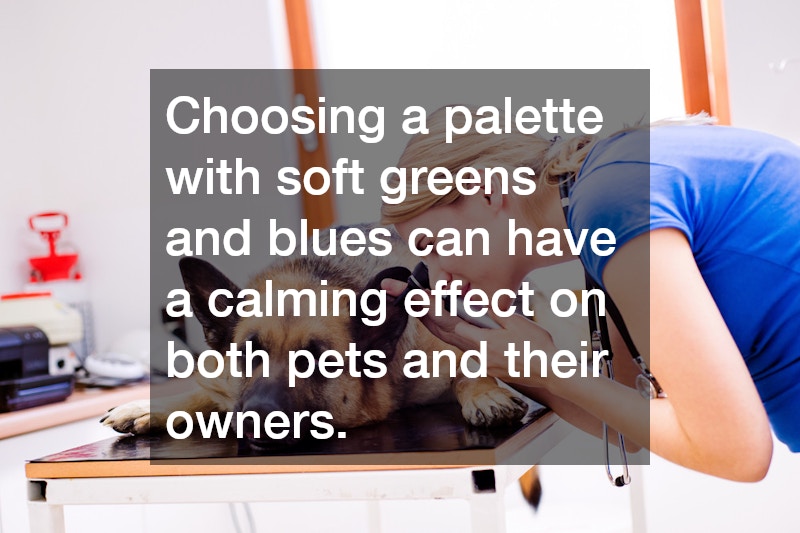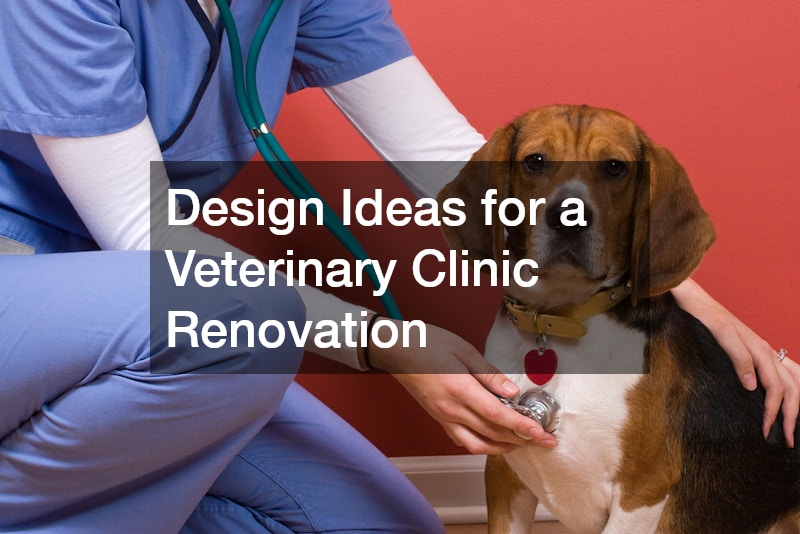
A veterinary clinic renovation is more than just a facelift; it’s about enhancing functionality and aesthetics to better serve clients and their pets. Creating a well-conceived design considers the clinic’s workflow, the comfort of the animals, and the modern needs of clients, resulting in improved services and a pleasant environment.
What are the essential design features for a veterinary clinic?
Optimizing Clinic Workflow
An effective layout streamlines workflow by making sure seamless transition paths between examination rooms, treatment areas, and surgical suites. Strategic design reduces congestion and minimizes patient waiting times, thereby enhancing the clinic’s operational efficiency. Simplified access routes are essential in emergencies, allowing for quick and unhindered transport of animals between critical areas. Additionally, a well-planned storage solution plays a crucial role in maintaining an organized workspace while keeping essential equipment within reach.
Prioritizing Animal Comfort
Animal comfort begins with minimizing stressors such as noise pollution and harsh lighting, achieved through thoughtful design interventions like soundproofing and soft ambient lighting. Veterinary clinics that prioritize these elements often observe more relaxed patient interactions during examinations. Comfort-enhancing elements like climate control systems assure stable room temperatures and prevent undue stress on animals sensitive to temperature variations. Proper ventilation systems also play a pivotal role by maintaining air quality and reducing odors, which can be distressing for animals.
How can a veterinary clinic design cater to both clients and their pets?
Creating a Welcoming Reception Area
The reception area is the first point of contact for clients, making it a vital space for creating positive first impressions. Comfortable seating, digital check-in options, and thoughtfully designed layouts contribute to an inviting atmosphere for both clients and their pets. An effective reception design includes informative displays and calming visuals to assist in keeping clients informed while reducing anxiety. The inclusion of digital amenities such as tablets for checking in or completing forms reflects a modern approach to client interactions.
Incorporating Pet-Specific Spaces
Creating distinct waiting areas for cats and dogs can substantially reduce stress for both species, acknowledging their differing needs and behaviors. Specialized spaces, such as play areas, enable pets to decompress and remain calm prior to appointments. Hydration stations offer a vital comfort resource for pets and also help to prevent dehydration during extended visits. Strategic planning in these areas caters to the animals’ needs, thus enhancing their overall experience at the clinic.
What materials and colors are best suited for a veterinary clinic renovation?
Choosing Durable and Safe Materials
Selecting materials that are non-toxic, easy to clean, and antibacterial is imperative for maintaining a sterile environment in a clinic setting. Durability is equally important, as furniture and surfaces should withstand the wear and tear from both high foot traffic and animal activity. Resilient flooring solutions not only enhance safety through non-slip finishes but also ease the cleaning process through their resistance to chemicals and moisture. Material selections thus contribute to the longevity of the clinic’s features and the health of its occupants.
Utilizing Calming and Professional Color Schemes
Color psychology plays an essential role in the design of veterinary clinics, where soothing tones can create a more relaxed atmosphere. Choosing a palette with soft greens and blues can have a calming effect on both pets and their owners. Using professional yet inviting colors allows the clinic to project a trustworthy image while making both clients and their pets feel at ease. Brighter colors can be used sparingly as accents to provide visual interest without overwhelming the senses.
How can technology be integrated into veterinary clinic design?
Smart Clinic Management Systems
Integrating modern management systems streamlines clinic operations by digitizing appointment scheduling, patient records, and communication channels. This technological advancement allows staff to manage daily tasks more efficiently and focus on patient care. Virtual appointment options provide clients with flexible access to veterinary services, enhancing the clinic’s outreach and convenience. By adopting digital solutions, clinics can differentiate themselves in a competitive market and elevate their service delivery.
Utilizing Advanced Diagnostic Tools
Integrating cutting-edge diagnostics and telemedicine into clinic operations empowers veterinarians to enhance their service delivery. These technologies enable timely and accurate diagnoses that improve patient and client outcomes. Access to telemedicine tools allows clinics to offer remote consultations, expanding their services and accommodating client needs in today’s fast-paced environment. The adoption of advanced equipment ensures the clinic remains at the forefront of veterinary care.
In summary, a thoughtfully planned veterinary clinic renovation considers workflow optimization, both animal and client comfort, material selection, and technological integration. By focusing on these core areas, a clinic can vastly improve its operational efficiency and enhance its service offerings for patients. The benefits of a well-designed clinic are extensive, including increased patient satisfaction, improved staff productivity, and a strengthened clinic reputation. These thoughtful renovations create an environment where both the clinic firm and its clientele can thrive.

